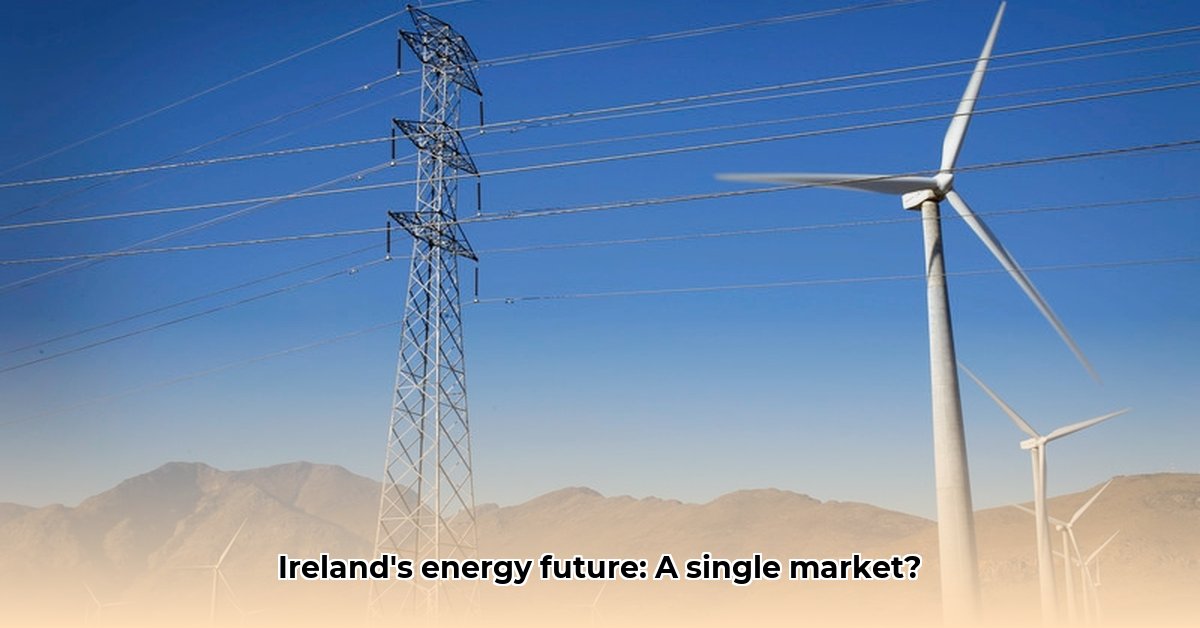Ireland’s electricity grid is a dynamic, interconnected system, constantly adapting to meet evolving energy demands. At its core lies the Single Electricity Market (SEM), a vital mechanism ensuring fair and efficient power distribution across the island. This article provides an in-depth exploration of the SEM, examining its achievements and challenges since its launch in 2007. We’ll explore the past, present, and future, while also diving into the critical actions stakeholders must take to optimize its functionality and ensure its success for all participants.
Ireland’s Integrated Energy Market: Evolution, Efficiency, and Future Prospects
The Single Electricity Market (SEM), a unique collaborative initiative between Ireland and Northern Ireland, represents a bold undertaking, integrating two energy grids across distinct jurisdictions. Since commencing operations in 2007, the SEM has achieved significant milestones while undergoing continuous adjustments. This analysis illuminates the SEM’s evolution, the obstacles it has overcome, and the prospective challenges that will shape Ireland’s energy future.
Charting Progress: Key Achievements of the SEM
The initial rollout of the SEM was an ambitious endeavor, aiming to consolidate disparate energy systems. While it delivered early benefits, unforeseen complications emerged. Bidding strategies, particularly concerning power plant start-up costs, required refinement. Disagreements also arose regarding the equitable allocation of costs when plants were frequently cycled on and off to accommodate fluctuating demand. While the system functioned, key areas needed improvement to enhance efficiency and fairness.
Modernizing the Market: The I-SEM Transition and its Impact
The Integrated Single Electricity Market (I-SEM) represents a significant upgrade, strategically designed to address previously identified concerns and proactively prepare the SEM for the future of energy. This upgrade aimed to enhance efficiency, transparency, and competitiveness within the market; however, its implementation has presented new challenges and required significant adjustments from market participants.
Renewables Integration and Maintaining Grid Stability within the I-SEM
A primary ongoing challenge involves the effective integration of intermittent renewable energy sources, such as wind and solar power. Despite their crucial environmental advantages, these sources are inherently prone to unpredictability, creating forecasting and pricing complexities. Upgrading the electricity grid to enhance stability and reliability is paramount, requiring advanced control systems and innovative storage solutions. Further, the SEM’s cross-border nature mandates seamless collaboration between the Commission for Regulation of Utilities (CRU) in Ireland and the Utility Regulator (UREGNI) in Northern Ireland. Consistent regulations, streamlined processes, and transparent communication are essential for maintaining a fair, efficient, and resilient market.
Stakeholder Actions: Shaping the SEM’s Trajectory
The long-term success and sustainability of the SEM are inextricably linked to the active participation and commitment of all stakeholders. Each participant should prioritize specific actions, both in the short and long term, to optimize the market’s performance and ensure its continued relevance:
| Stakeholder | Short-Term Actions | Long-Term Actions |
|---|---|---|
| SEMO (EirGrid & SONI) | Enhanced market monitoring for anomaly detection and prevention of manipulative behavior. | Investing in sophisticated forecasting technologies that accurately predict fluctuating renewable energy supply and demand patterns. |
| Generators (Thermal & Renewable) | Refining bidding strategies to optimize performance within the I-SEM framework. | Investing in flexible power plants, energy storage solutions, and diversification of renewable energy sources to enhance grid stability. |
| Regulators (CRU & UREGNI) | Strengthening market oversight; enhancing transparency through clear communication. | Developing long-term policies that incentivize renewable energy adoption while ensuring the continued stability and reliability of the grid. |
| Consumers | Monitoring energy prices; adopting energy-efficient appliances and practices. | Advocating for energy independence through investment in distributed generation, smart technologies, and improved grid infrastructure. |
Navigating Regulatory Requirements: Fostering Cross-Border Collaboration and Harmonization
A robust regulatory framework underpins the SEM’s sustainable functionality and equitable operation. Harmonizing standards and regulations across distinct jurisdictions presents a persistent challenge that demands continuous attention. The CRU and UREGNI must engage in proactive collaboration to anticipate the evolving needs of the energy landscape and ensure regulatory alignment. Transparent and predictable regulations are critical for fostering trust, attracting investment, and promoting innovation within the SEM.
Charting the Future: Identifying Risks and Capitalizing on Opportunities
The SEM is a dynamic entity, so proactive risk management and strategic opportunity capitalization are crucial for its long-term success. According to comprehensive industry analysis, several key uncertainties necessitate careful monitoring and mitigation:
| Technology/System | Risk Category | Probability | Impact | Mitigation Strategy |
|---|---|---|---|---|
| I-SEM Design | Operational Risk | Medium | Medium | Implementing ongoing monitoring processes and embracing continuous improvement initiatives to address design flaws. |
| Renewable Integration | Technological Risk | Medium | High | Investing in advanced forecasting capabilities; modernizing grid infrastructure; promoting flexible generation resources and energy storage solutions. |
| Cyber Security | Security Risk | Low | High | Implementing robust security measures; conducting regular system audits; fostering collaboration with cybersecurity experts. |
| Regulatory Uncertainty | Regulatory Risk | Low | Medium | Maintaining open communication channels; engaging in proactive regulatory planning; seeking stakeholder input on policy development. |
The future viability and success of the SEM hinge on proactive risk mitigation, strategic planning, and unwavering commitment to innovation. By addressing these challenges head-on and capitalizing on emerging opportunities, Ireland can transition towards a sustainable, resilient, and equitable energy system that effectively meets current and future demands. This transformative journey necessitates careful planning, adaptive regulation, and a collective commitment to innovation and collaboration among all stakeholders.










